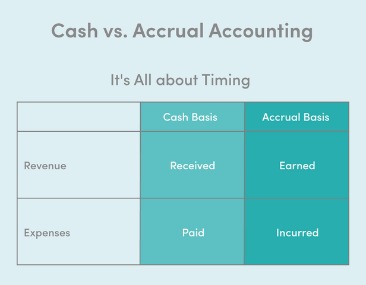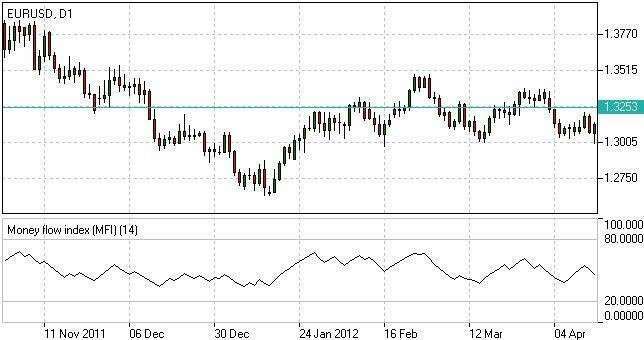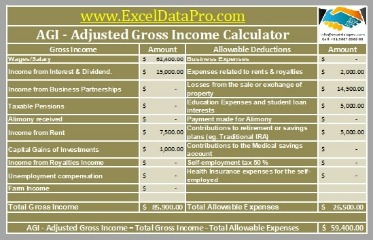
Purchasing cards offer secure and convenient electronic payment options, streamline purchase order approvals, and reduce administrative costs. Think of it this way – you need to spend your resources in the right place if you want to stand out and grow your business. Today, business process automation tools are readily available to give employees a head start even when they aren’t programmers.
- Because of their openness and protection during audits, your firm and your suppliers will be safe.
- They facilitate efficient bookkeeping and make audits and cost management a simpler task.
- So far, you have understood the concept of the purchase requisition and purchase orders; now it is time to compare them.
- There may be multiple steps between purchase requisitions and approval/denial of the purchase, depending on the operating principles of the company.
- At this point, the management will check the request against the department’s expenditure limit.
Book a 30-min live demo to see how Nanonets can help your team implement end-to-end AP automation. You can find your purchase order number on the top right-hand side of the invoice document. On the other hand, a purchase order number is used by the vendors when they send the invoice. The employee can then walk to a nearby Walmart store, purchase, and pay using a credit card. In our experience, 99% of our customers don’t ask for PO approval if the requisition amount is less than or equal to the purchase order amount. On the contrary, certain nonprofit organizations have a hard requirement of having at least 2 approvals, no matter the amount.
Vendor Management
Employees who need goods or services create a purchase requisition and submit it to the appropriate personnel for review and approval. The review and approval process helps to ensure that the requested purchase aligns with the organization’s procurement policies, budget, and objectives. Unlike the internal purchase requisition document, the purchase order is the formal request to the supplier to procure the goods in question. Purchase orders are also a legal document outlining the deal between a buyer and supplier. By using purchase requisitions, companies can ensure the appropriate allocation of resources, as it promotes an informed, systematic procurement process.
When a vendor invoice comes in the accounts payable team can match it against a purchase order based on the PO number assigned to the invoice. Without a requisitioning system, team members could go straight to purchasing without getting the proper approvals. Purchase order automation is far more than just a technological upgrade – it’s a strategy to thrive in the digital age.
Want to read more on the difference between Purchase Orders and Requisitions?
Keeping proper records means that when a question arises, you can answer it at the drop of a hat. If an employee needs to know when to expect critical supplies, you can look up a purchase order to see its filing date and any communication you’ve had with vendors. Isaac Newton said it best — for every action, there’s an equal and opposite reaction. In your business, it’s your job to make sure these actions and reactions work together to help you accomplish your goals.
Sometimes, a purchase requisition is created by an appointed person responsible for purchasing for the entire department. A purchase requisition is typically created by an employee identifying a need for a particular product or service. This need can arise for various reasons, such as replacing an old or broken item, upgrading equipment, or stocking up on inventory. This request begins the process of seeking finance approval for the purchase, identifying the best supplier, completing the order, and arranging payment. For our dentist’s office, the purchase order would include the same information as the purchase requisition in terms of office location, quantity, description, and price.

Regardless of whether your business is large or small, purchasing can be a tedious process without the right tools. To learn more about how we’ve helped other companies simplify this process and how you can ensure compliance policies are adopted by your team members, we encourage you to download our free guide. This process is also one of the most beneficial to optimize in indirect procurement since multiple tasks must be completed in succession before a request can be fulfilled. Above all, both purchase requisition and purchase orders are an important part of the purchase procedure. In the absence of these two, the purchase can neither be initiated nor confirmed.
The team member at the office requesting this purchase would submit this requisition to their purchasing department for approval, rejection, or further clarification. This is the part of the purchasing process where team members get approval to purchase the goods and services they need. This form is created by the party desiring to make the purchase and is then submitted to the appropriate purchasing approvers who control that department’s finances. Using these documents creates more control over employee spending and produces a higher likelihood of receiving discounts because of the greater insights and visibility into spending and supplier relationships. Purchase requisitions (PRs) and purchase orders (POs) are key documents companies use in this process. To purchase the toothbrushes that you receive after a dentist appointment, the staff must go through the purchasing department to ensure they’re getting the best price and meeting business needs.
PR Approval
An organized purchase ordering process that mandates purchase requisitions and purchase orders can enable the purchasing and financial departments to better manage funds and resources. The understanding of purchase requisition vs. purchase order requires an understanding of what each of these is. As touched on in our investigation of indirect and direct procurement strategies, the procurement process is a lengthy and detailed process of many unique functions. According to SAP, these processes are broken down into the purchase requisition, supplier selection, vendor selection, purchase order, goods receipt, invoice, and payment. Upon careful inspection, you might notice that two of these processes sound very similar and might easily be interchanged by those who don’t work in procurement. Yes, purchase requisitions typically come before purchase orders in the procurement process.
As a result, people either misuse these documents or don’t use them at all. Purchase requisitions are documents used when team members need to make a purchase on behalf of their organization. If you’re looking to streamline AP processes, automate invoice or payment processing, or curious about how accounts payable automation works, this is the guide for you. Jotform Inbox makes communication easier, so you and your employees can process requests and track assignments in a centralized location. Regardless of whether you need a form for a purchase requisition or a purchase order, Jotform has you covered. Using Jotform’s customizable online forms eliminates the need for paper forms and the risk of losing important order information.
- To maintain greater control over procurement, you need to be able to review the performance and efficiency of a process in real-time.
- This enables teams from various departments to create requisitions more easily using various systems.
- Once the seller accepts the order, the purchase order becomes a legally binding contract between the seller and the buyer.
- Once the purchase request and requisition are approved by the accounting department, the authorized person proposes the purchase to the vendor with the purchase order form.
Businesses have begun to use more sophisticated electronic procurement systems to track both the purchase requisition and the purchase order process. As a result, many have seen a significant reduction in costs, greater control over company spending, and a more streamlined purchasing process that integrates directly with the rest of their financial systems. A purchase requisition is a formal request made by an employee or department within an organization to procure goods or services. It typically includes details such as the item or service requested, quantity, estimated cost, and any other necessary specifications. Purchase requisitions (PRs) and purchase orders (POs) are part of the same process, but not the same document.
Automation: streamlining the purchase requisition and purchase order process
The same is true for a purchase requisition — a system that takes stock of necessary items and outlines who’s responsible for approving orders speeds up the process and reduces uncertainty. Using purchase requisitions and purchase orders correctly creates a culture of better communication and cooperation. Once a requisition goes through the proper approval channels, you’ll use this information to fill out a purchase order so you can reach out to the appropriate vendor and get what you need. You can set up a different approval process for the purchase order itself — which will run more smoothly since you’ll have worked out the details while approving the purchase requisition. An organized company operates more efficiently than a disorganized one. If your business doesn’t have a clear system for recording purchases, it’s pretty easy for these details to get lost.
The Best Procurement Management Software Solutions – Solutions Review
The Best Procurement Management Software Solutions.
Posted: Mon, 07 Aug 2023 07:00:00 GMT [source]
Depending on the type of purchase and the internal process for your organization, you may be asked to provide several potential suppliers for the materials, services, or software you need. You may also need to provide preliminary evaluation of these suppliers as groundwork for the negotiation and purchase. Much of the same information from the requisition form goes on the purchase order. The additional information (billing address, payment terms, PO number, etc.) is payment information for the vendor to use when they create an invoice for the buyer to pay for what’s on the PO.
Automating purchase orders improves visibility, eliminates paperwork, reduces errors, enhances bookkeeping, and simplifies the procurement process. A purchase order is a legal commitment between the buyer and the vendor, formalizing the agreement for the purchase of goods or services. Purchase requisitions ensure informed and systematic procurement by allowing detailed planning, budgeting, and resource allocation. This document is used when an employee in your organization makes an order request if a need arises for certain goods or services. The average purchase cost reduction after implementing a procurement solution is around 15%, and the time taken to get requisition orders filled by up to 75%.
Top 10 Signs Your Organization Needs a Talented Chief … – Supply Chain Management Review
Top 10 Signs Your Organization Needs a Talented Chief ….
Posted: Thu, 10 Aug 2023 07:00:00 GMT [source]
The global market size of procurement as a service is expected to grow to $13.58 billion in 2030. Thus, there is no doubt that the importance of procurement as a service is growing. However, several people are confused about the purchase taxpayer identification numbers requisition and purchase order and think it is the same. The Purchase Requisition is very much an internal document or part of an internal approval process and the PO is very much the supplier-facing side of the process.
Is your purchasing process suffering from unnecessary and expensive cash leaks? Learn how to avoid the biggest money-wasting process issues by downloading our free guide, 5 Ways your Purchasing Process is Leaking Cash, (and how to fix it). The most significant benefits come from time and money saved by eliminating tedious and time-consuming tasks from the purchase order process. The requisition helps organizations save money and ensure quality by vetting every purchase. Where there are no proper checks in place, a team member may engage in fraud.













